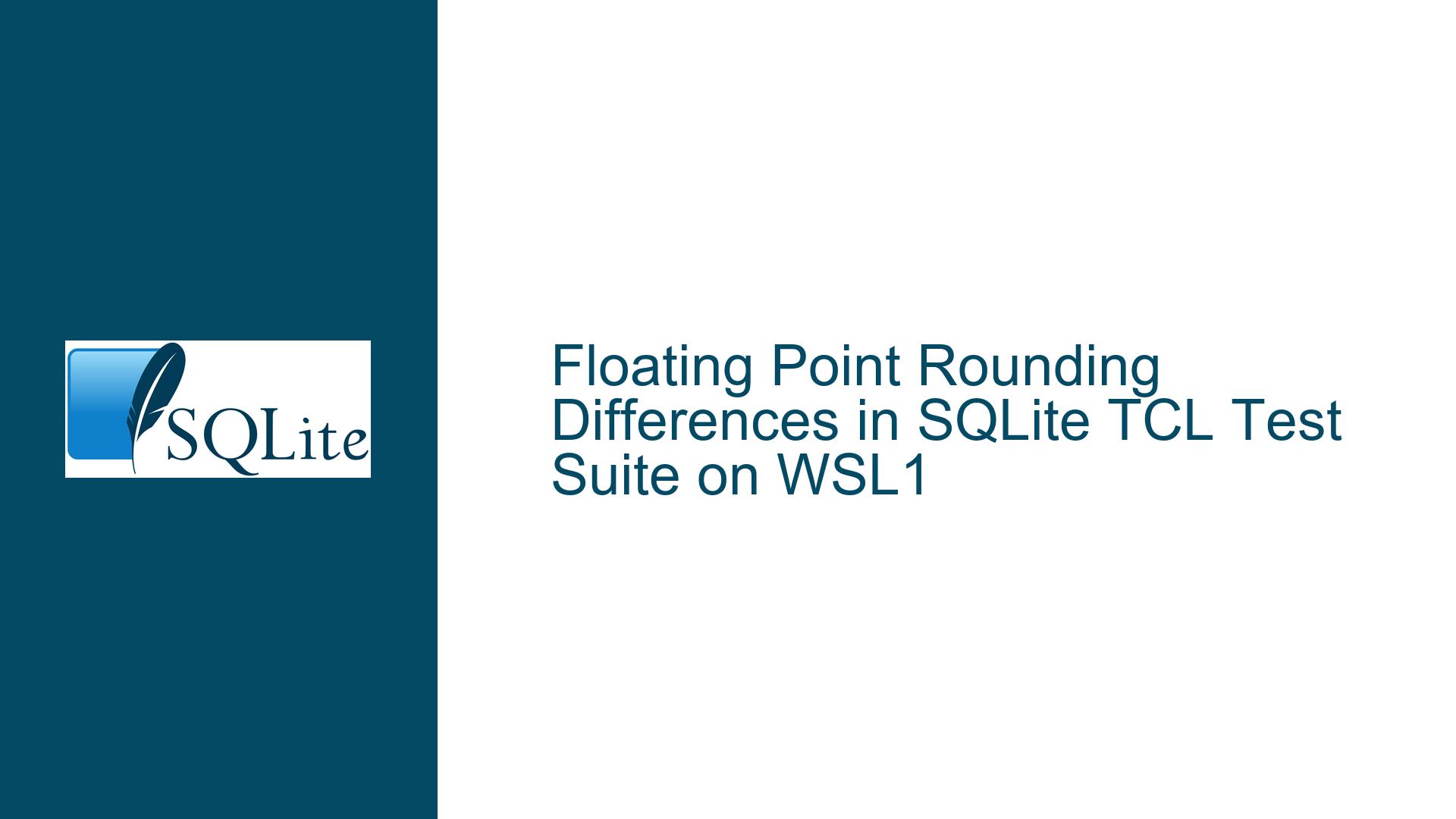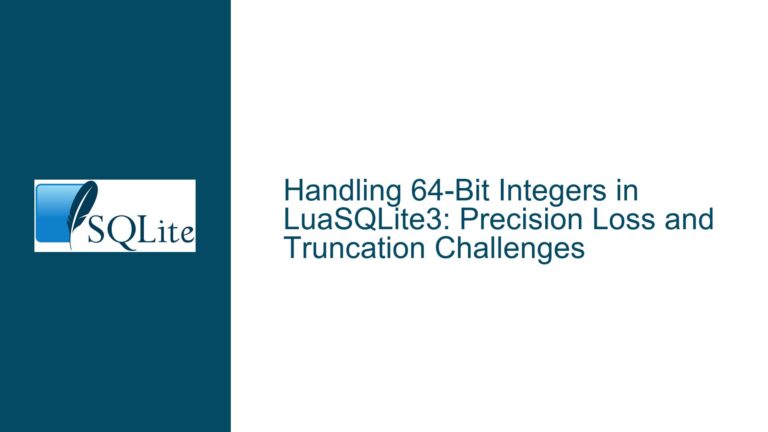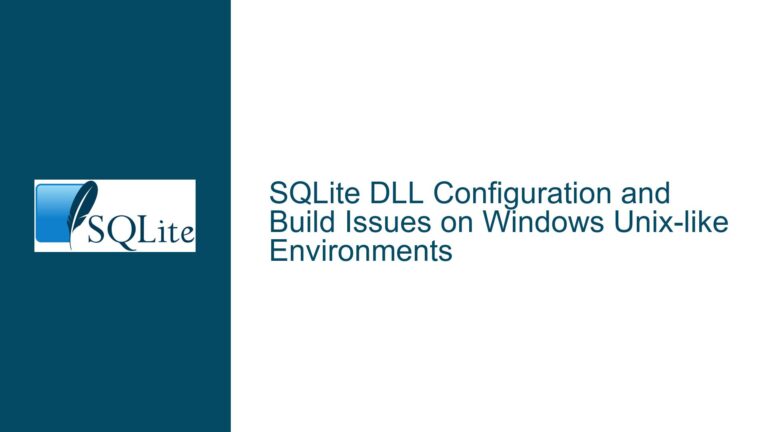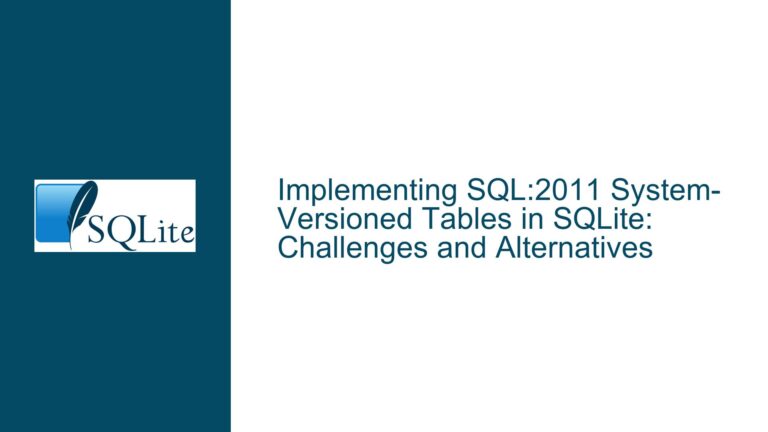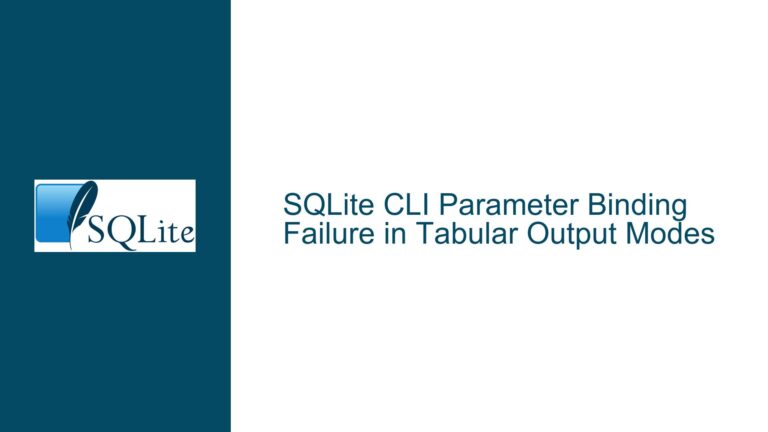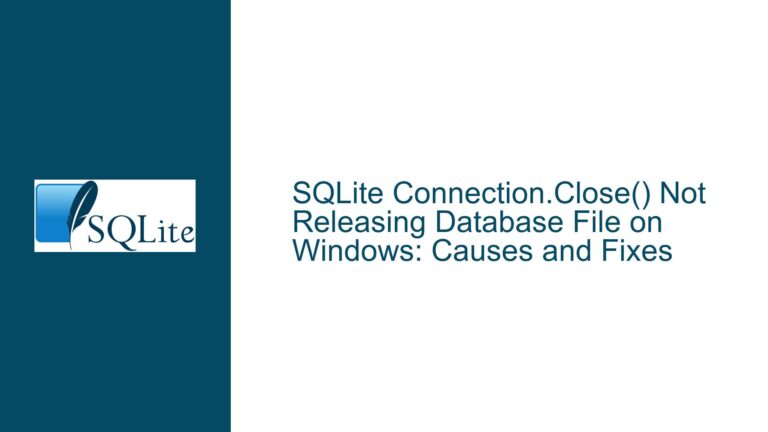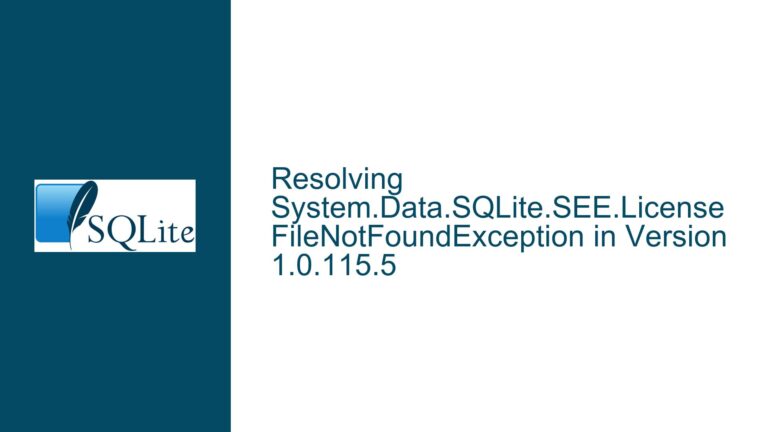Floating Point Rounding Differences in SQLite TCL Test Suite on WSL1
Floating Point Conversion Failures in SQLite TCL Test Suite
The core issue revolves around the SQLite TCL test suite encountering failures specifically in the atof1 test cases when executed on the Windows Subsystem for Linux 1 (WSL1). These test cases are designed to validate the accuracy and consistency of floating-point conversions between text and real number representations within SQLite and TCL. The failures manifest as discrepancies in the expected floating-point values, which are attributed to rounding differences in the floating-point arithmetic operations.
The atof1 test cases are critical for ensuring that SQLite handles floating-point numbers correctly, particularly in scenarios where numbers are converted from text to real and back to text. This is essential for maintaining data integrity, especially in applications that rely heavily on precise numerical computations, such as financial software, scientific simulations, and data analytics tools.
The issue is particularly perplexing because the same test suite runs without any problems on a native Ubuntu virtual machine (VM) installed on the same hardware. This discrepancy suggests that the problem is not inherent to the SQLite or TCL implementations but is instead related to the environment in which the tests are executed—specifically, WSL1.
The problem is not isolated to a single machine; it has been reproduced on multiple Windows 10 systems, both Pro and Home editions, running the 64-bit version of the operating system. This consistency across different machines indicates that the issue is systemic to WSL1 rather than being a result of specific hardware configurations or localized software anomalies.
WSL1 Floating-Point Arithmetic Implementation Issues
The root cause of the floating-point rounding differences in the SQLite TCL test suite on WSL1 can be traced back to the way WSL1 handles floating-point arithmetic. WSL1, or Windows Subsystem for Linux 1, is a compatibility layer that allows Linux binary executables to run natively on Windows 10. However, this compatibility layer does not provide a full Linux kernel; instead, it translates Linux system calls into Windows system calls. This translation layer introduces subtle differences in how certain operations are handled, particularly those involving floating-point arithmetic.
One of the key differences lies in the implementation of the floating-point unit (FPU) and the associated libraries that handle floating-point operations. In a native Linux environment, the FPU and libraries are optimized for consistency and precision, ensuring that floating-point operations yield predictable and accurate results. However, in WSL1, the translation layer may introduce inconsistencies in how floating-point operations are executed, leading to rounding differences that are not present in a native Linux environment.
Another contributing factor is the way WSL1 handles system calls related to floating-point operations. In a native Linux environment, system calls are directly executed by the Linux kernel, which ensures that floating-point operations are handled consistently. In WSL1, these system calls are intercepted and translated into equivalent Windows system calls. This translation process can introduce subtle differences in how floating-point operations are executed, leading to the observed rounding discrepancies.
The issue is further compounded by the fact that WSL1 does not provide a full Linux kernel, which means that certain low-level optimizations and consistency checks that are present in a native Linux environment are absent in WSL1. This lack of optimization can lead to differences in how floating-point operations are executed, particularly in edge cases where precision and consistency are critical.
Upgrading to WSL2 and Ensuring Consistent Floating-Point Arithmetic
The most effective solution to the floating-point rounding differences in the SQLite TCL test suite on WSL1 is to upgrade to WSL2. WSL2, or Windows Subsystem for Linux 2, represents a significant improvement over WSL1, as it includes a full Linux kernel that runs in a lightweight virtual machine (VM) on Windows 10. This full Linux kernel ensures that Linux system calls are executed natively, without the need for translation, which eliminates the inconsistencies introduced by WSL1.
Upgrading to WSL2 involves several steps. First, ensure that your Windows 10 installation is up to date, as WSL2 is only available on certain versions of Windows 10. Specifically, you need to be running Windows 10, version 1903 or higher, with Build 18362 or higher. Once you have confirmed that your system meets these requirements, you can enable WSL2 by following these steps:
Enable the Windows Subsystem for Linux: Open PowerShell as Administrator and run the following command:
dism.exe /online /enable-feature /featurename:Microsoft-Windows-Subsystem-Linux /all /norestartEnable the Virtual Machine Platform: In the same PowerShell window, run the following command:
dism.exe /online /enable-feature /featurename:VirtualMachinePlatform /all /norestartSet WSL2 as the Default Version: After enabling the necessary features, set WSL2 as the default version for new Linux distributions by running:
wsl --set-default-version 2Install or Update Your Linux Distribution: If you already have a Linux distribution installed via WSL1, you can convert it to WSL2 by running:
wsl --set-version <distribution_name> 2Replace
<distribution_name>with the name of your installed Linux distribution, such asUbuntu-18.04.
Once you have upgraded to WSL2, you should find that the SQLite TCL test suite runs without any floating-point rounding differences. This is because WSL2 provides a full Linux kernel that ensures consistent and accurate floating-point arithmetic, eliminating the discrepancies introduced by WSL1.
In addition to upgrading to WSL2, there are several best practices you can follow to ensure consistent floating-point arithmetic in your SQLite applications:
Use PRAGMA Statements: SQLite provides several PRAGMA statements that can help control floating-point behavior. For example, you can use
PRAGMA encodingto ensure that the database uses a consistent encoding format, which can help prevent issues with floating-point conversions.Enable Full-Text Search: If your application involves complex text-to-real number conversions, consider enabling SQLite’s full-text search (FTS) capabilities. FTS can help ensure that text-based queries are handled consistently, reducing the likelihood of floating-point rounding errors.
Implement Database Backups: Regularly back up your SQLite databases to ensure that you can recover from any data corruption or inconsistencies that may arise due to floating-point rounding errors. Use SQLite’s built-in backup API to create consistent and reliable backups.
Monitor and Log Floating-Point Operations: Implement logging and monitoring for floating-point operations in your SQLite applications. This can help you identify and diagnose any inconsistencies or rounding errors that may occur, allowing you to address them before they impact your application’s performance or accuracy.
By following these best practices and upgrading to WSL2, you can ensure that your SQLite applications handle floating-point arithmetic consistently and accurately, regardless of the underlying environment. This will help you avoid the floating-point rounding differences that can arise when running the SQLite TCL test suite on WSL1, ensuring that your applications perform as expected in all scenarios.
